Top 7 Best Castle Holidays in The UK
If you’re searching for exciting things to do with the family, what better way to spend the day than to explore the ancient famous castles of England? England is said to be home to over 4,000 castles, built many hund reds of years ago and scattered throughout the UK countryside and coastline. Many of the most famous still stand today, acting as a reflection of the countries rich heritage.
Will you spend your weekends or holidays in one of these castles, and enjoy an air of mystery about them?
1. Bovey Castle, Devon
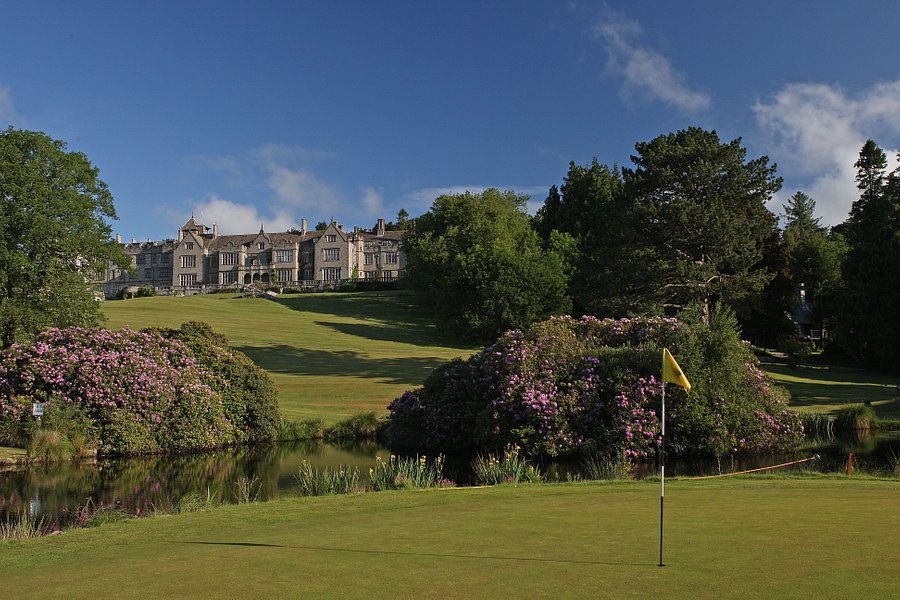 |
| Photo: TripAdvisor |
Staying at Bovey Castle is a timeless experience.
First opened in 1930 by Great Western Railways it exudes the charm of the glorious decade it was born into. Effortlessly elegant, almost beyond belief, from the period print wall coverings to the vaulted ceilings, intricate stonemasonry and palatial fireplaces.
Breathe deeply outdoors as you take in the unrivalled views of Dartmoor National Park or walk the historic 18-hole golf course. Journey into the deer park; these glades, meadows and woodland trails are home to over 175 fallow deer. The Art Deco pool and the Gentleman’s Quarter of the Elan Spa await indoors.
Run a hand along the wood panelled walls, imagine the scenes this castle has seen; the elegant attire of bygone guests, the gatherings, the friendships formed, the love affairs realised. This is a special place indeed.
At first glance, Bovey looks too swanky to be properly family-friendly, but behind the imposing facade it is as welcoming to children as adults. There’s an excellent kids’ club, the chance for them to meet chickens and ferrets on the estate farm, or try their hand at archery, croquet or just roam the 275-acre estate. Adult-friendly activities include mixology classes and horse-drawn carriage rides and the Elan spa offers a wide range of indulgent ESPA treatments. Dinner choices range from a seven-course, wine-paired tasting menu in the beautiful Tasting Room to family favourites in the informal Brasserie.
2. Thornbury Castle, Gloucestershire
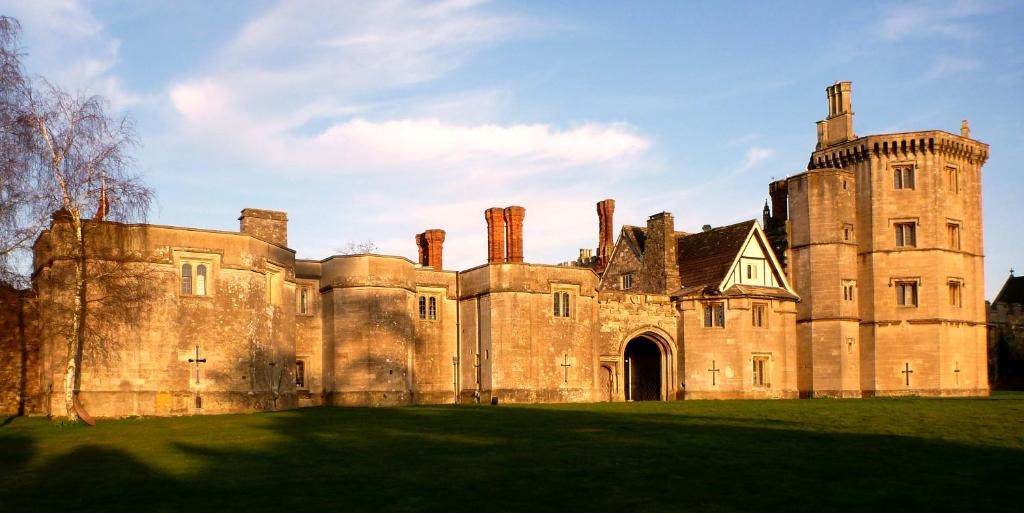 |
| Photo: Booking.com |
Thornbury Castle is a beautiful 16th century building, which was once owned by Henry VIII and Queen Mary I, and stands in 15 acres of regal splendour, surrounded by Tudor walled gardens.
It nestles on the northern edge of Thornbury adjacent to the Cotswolds countryside, 12 miles north of Bristol, and is well placed for visiting the the surrounding areas including the Cotswolds, the Georgian city of Bath, Bristol and Wales.
Following a multi-million pound refurbishment programme, guests will experience a luxurious and sophisticated castle hotel stay, with reference to the history and traditions of Thornbury’s most famous owner; King Henry VIII. Exceptional grand architecture with towers, battlements and Tudor chimneys, and the Tudor walled gardens add to the historical experience.
Thornbury Castle has 26 carefully-restored bedchambers, all named after key figures from Tudor history, many with sumptuous four-poster beds and splendid stone-carved fireplaces, making your stay just that little bit more special.
Henry and his Queen, Anne Boleyn spent ten nights at the castle in 1535, during their progress tour of England and their original bedchamber, King Henry VIII suite, is still available for guests to enjoy today. The "Catherine of Aragon Tower Suite" boasts the largest bed in a hotel in the UK - 10 feet wide.
The restaurant at Thornbury Castle offers plenty of modern, British inspired dishes, as well as some traditional favourites. All dishes on the dinner menu use only the finest and freshest ingredients, many grown in the castle's kitchen garden and herb garden. Afternoon Teas taken in splendid surroundings at Thornbury Castle are the ultimate treat for all guests.
It is also a perfect venue for a wide range of events, including private dining, day meetings, exclusive use events and celebrations, team building and corporate fun days within our landscaped gardens and original Tudor walled gardens.
The recipient of many prestigious awards for its fine food, Thornbury Castle has three dining rooms, each baronial in style, with stunning chandeliers, panelled walls, heraldic shields and open fires.
3. Glenapp Castle, Ayrshire
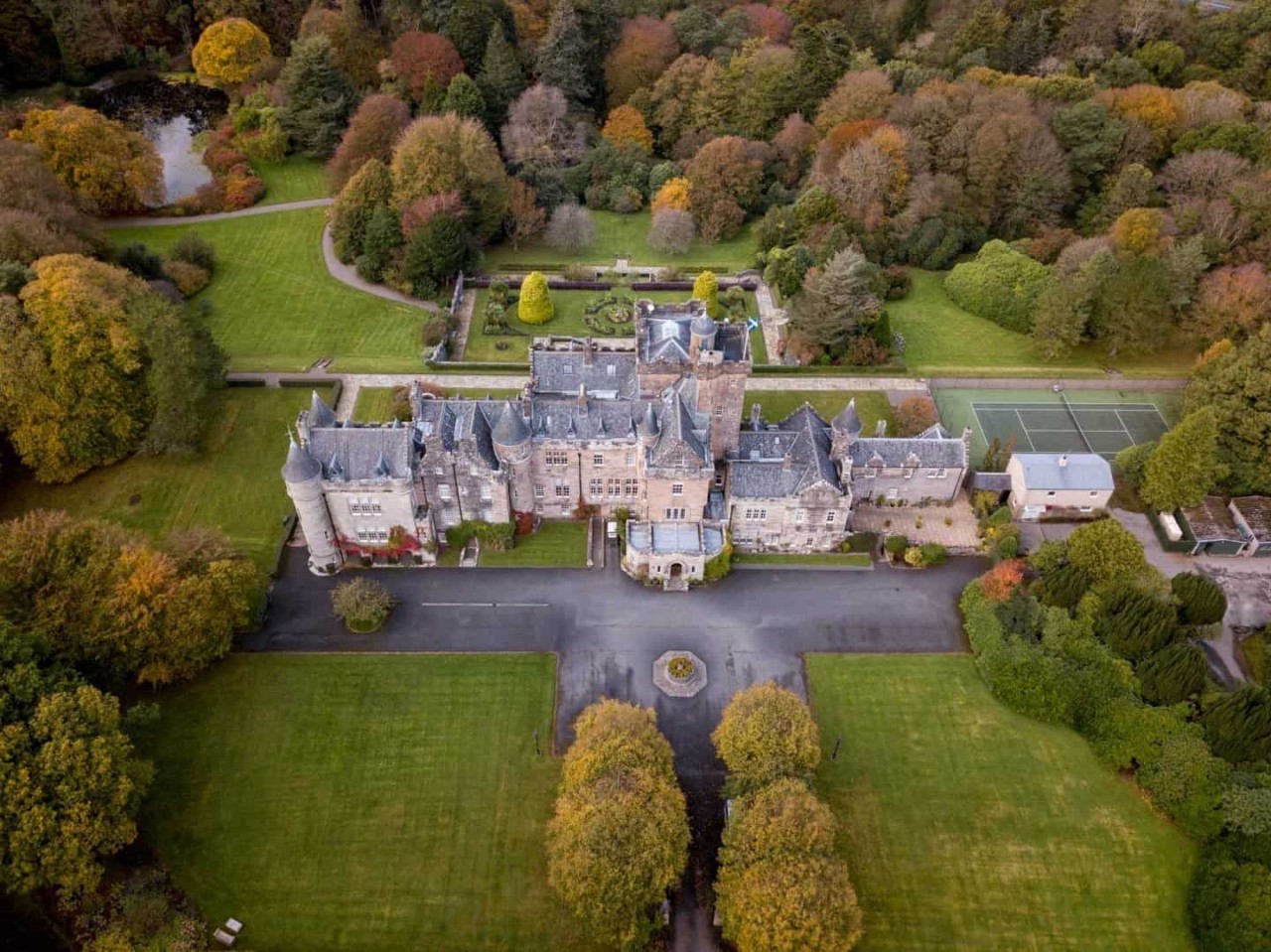 |
| Photo: We Dream of Travel Blog |
Glenapp Castle, formerly the family seat of the Earl of Inchcape, is now a luxury hotel and restaurant located about 2.5 kilometres southeast of Ballantrae, South Ayrshire, Scotland.
The castle was built for the Deputy Lord Lieutenant of the County, James Hunter. It has no older origin. Designed by the famous Scottish architect David Bryce the Deputy Lord Lieutenant of Ayrshire at the time, the Castle was finished in 1870. It is a noteworthy example of the Scottish Baronial style of architecture The Inchcape family owned the castle from 1917 until the early 1980s. Pioneering aviator Elsie Mackay, daughter of the first Earl of Inchcape, lived at the castle until her untimely death in 1928 in an attempt to fly the Atlantic in a single engined Stinson Detroiter. The Castle opened as a hotel in 2000; entry to the castle and its grounds is only for guests with a room or restaurant reservation.
The castle was built for the Deputy Lord Lieutenant of the County, James Hunter. It has no older origin. Designed by the famous Scottish architect David Bryce the Deputy Lord Lieutenant of Ayrshire at the time, the Castle was finished in 1870. It is a noteworthy example of the Scottish Baronial style of architecture The Inchcape family owned the castle from 1917 until the early 1980s. Pioneering aviator Elsie Mackay, daughter of the first Earl of Inchcape, lived at the castle until her untimely death in 1928 in an attempt to fly the Atlantic in a single engined Stinson Detroiter. The Castle opened as a hotel in 2000; entry to the castle and its grounds is only for guests with a room or restaurant reservation.
Hidden away in lush woodland and just a stone’s throw from the sea, Glenapp offers sumptuous bedrooms and 36 acres of gardens, tennis, croquet and a slap-up six-course menu at dinner, with most of the fruit, veg and herbs coming from the estate garden. Beyond the grounds, there are Hebridean sea safaris, fishing trips, whisky tastings and stargazing on offer.
4. Langley Castle, Northumberland
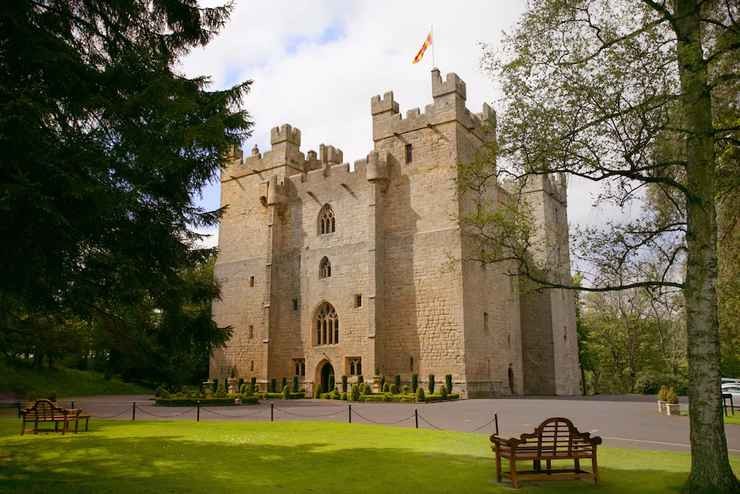 |
| Photo: Traveloka |
Langley Castle is a restored medieval tower house, now operated as a hotel, situated in the village of Langley in the valley of the River South Tyne some 3 miles (5 km) south of Haydon Bridge, Northumberland, England. It is a Grade I listed building.
It was built in the middle of the 14th century by Sir Thomas de Lucy as a great H plan H-shaped tower of four storeys. Before this the site was the seat of the Barons of Tynedale in the 12th century, from whom descend the Tyndall family. It was attacked and severely damaged in 1405 by the forces of Henry IV in the campaign against the Percys and Archbishop Scrope. It remained as a ruin until it was bought and restored by a local historian, Cadwallader Bates, in 1882. Bates died in 1902 and his wife Josephine continued the restoration. After she died in 1932 the building remained empty until it was used as a barracks in the Second World War, following which it was used as a girls' school. In the Eighties It was bought by the Robb family. In 1986, it was bought by Dr Stuart Madnick, a professor at the Massachusetts Institute of Technology, who converted it into a luxury hotel. Langley Castle is set in a woodland estate of 10 acres (40,000 m2). One of the more remarkable features of the building is the south-west tower, which is occupied by no fewer than 12 garderobes, four to each floor.
Built in 1350, Langley is a complete medieval fortified castle, with suits of armour flanking the arched doorways and portraits of former residents set against the original stone walls. With just nine bedrooms it has a more intimate feel than some of the grander castles. Guests can join daily, free battlements tours and discover areas usually off-limits.
5. Amberley Castle, West Sussex
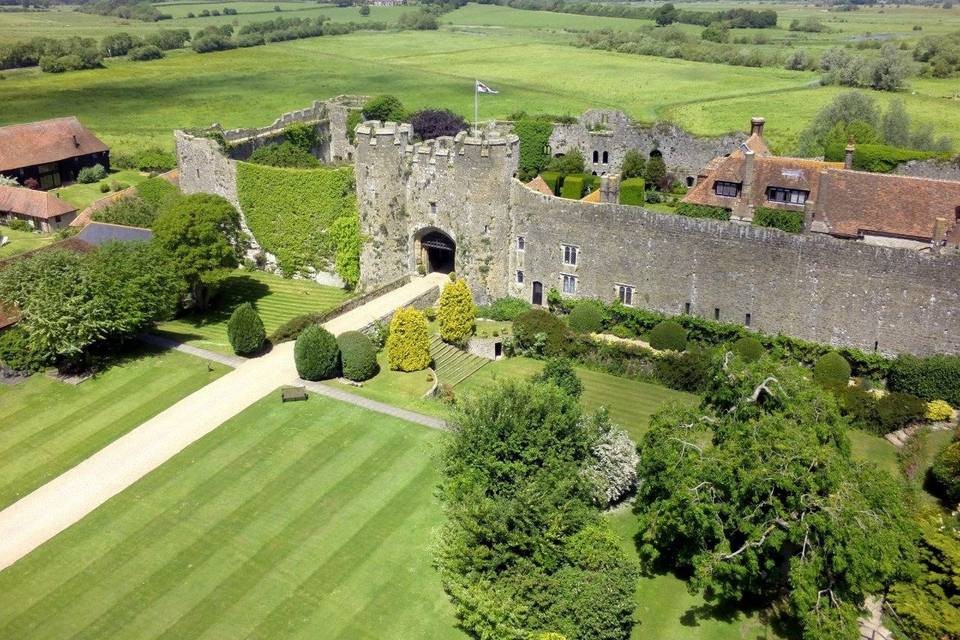 |
| Photo: Hitched |
Amberley Castle stands in the village of Amberley, West Sussex.
The castle was erected as a 12th-century manor house and fortified in 1377, giving it a rhomboid shaped stonework enclosure with high curtain walls, internal towers in each corner, a hall and a gateway. It was used as a fortress by the bishops of Chichester. The walls, gateway and two of the towers remain as a Grade I listed building and are now in use as a privately owned hotel.
The site on which the castle stands was endowed to the See of Selsey by Cædwalla of Wessex in AD 683. When the bishopric was removed to Chichester, after the Norman conquest, it continued to be held by the Bishops of Chichester. The first recorded structure was a timber-framed lodge built by Bishop Ralph de Luffa in 1103. This was knocked down in 1140 by Bishop Seffrid I and replaced by a more elaborate stone hall, to which Bishop Seffrid II added the East Wing in 1200. A larger Great Hall was added by Bishop John Langton between 1305 and 1337, when the site became known as the Bishop of Chichester’s Summer Palace.
Bishop William Reade had the Great Hall knocked down and replaced by a better one and in 1377 applied for, and received, permission to fortify the site and add the gatehouse and oubliette. Walls up to 40 feet high were built round the whole site. Bishop Robert Sherborne, who died in 1536, was the last Bishop of Chichester to occupy the castle, after which it was leased by a number of tenants.
In the English Civil War the Royalist tenant caused Oliver Cromwell to order General William Waller to attack the castle, which resulted in the loss of 20 feet from the height of the walls and the destruction of the Great Hall. The castle was sold to a Mr Butler but restored to the Bishop of Chichester after the Restoration of the Monarchy in 1660. The Butlers remained as tenants, followed by the Briscoes.
In 1872, the Castle was sold to Robert Curzon, 15th Lord Zouche, who used it as a hunting lodge before selling it to Henry Fitzalan-Howard, 15th Duke of Norfolk in 1893. Known as ‘The Builder Duke’, the 15th Duke renovated the castle, as well as modernising Arundel Castle and building Arundel Cathedral. In 1926, the castle passed to the Emmet family, in 1982 to Hollis Baker, in 1987 to an American family and in 1988 to Joy and Martin Cummings, who converted it to an award-winning country house hotel. From 2004 to 2011 it was a member of Relais & Châteaux.
Much modified, the castle is now owned by Andrew and Christina Brownsword and operated as an hotel in the Brownsword Hotel group.
6. Pendennis Castle, Cornwall
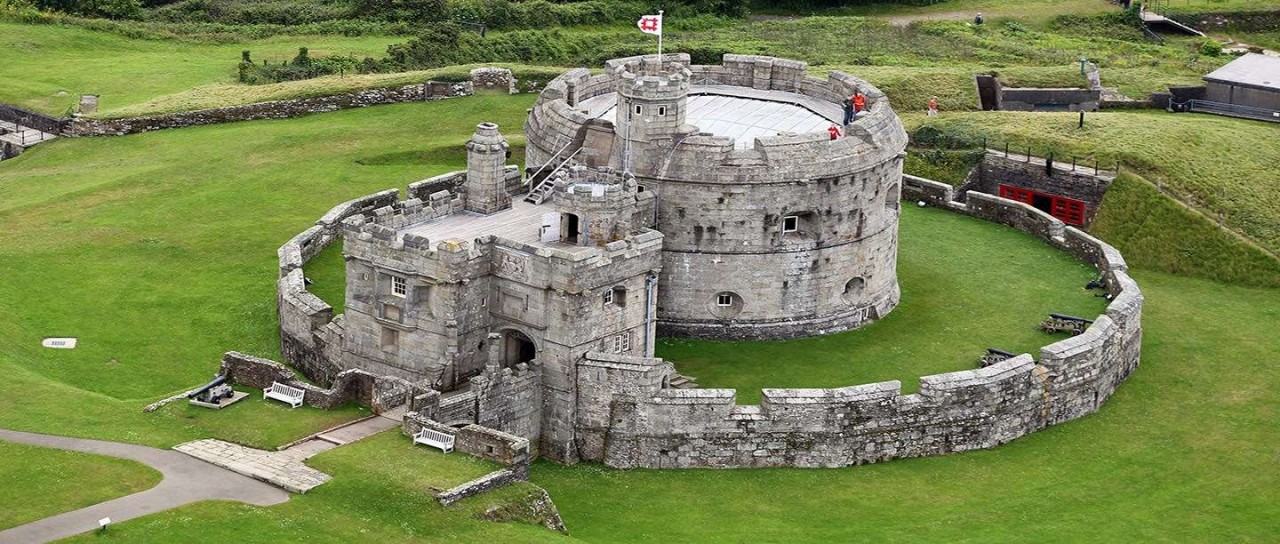 |
| Photo: English Heritage |
For a great value family day out in Cornwall, take a trip to Pendennis Castle, Falmouth, one of the finest of the mighty fortresses built by Henry VIII to defend the country against invasion.
Stir up your sense of adventure at Pendennis Castle, a coastal fortress with unmissable views over Falmouth. Travel back to wartime Cornwall, climb to the top of the castle keep, and enjoy acres of green space at this historic gem.
Situated on a headland overlooking the bustling town of Falmouth, Pendennis is one of Henry VIII's finest seaside castles. And despite its peaceful setting, it has a rich and poignant history. The castle has defended Cornwall since Tudor times and played a vital role protecting the coast during the two World Wars.
The iconic Tudor keep is the perfect backdrop to a spot of lunch, set against the open sea. Grab a takeaway treat from the castle café, which serves up a delicious selection of food as fabulous as the views. Regulars on the menu include Cornish pasties, freshly made sandwiches and ploughmans' lunches – full of seasonal Cornish ingredients. You can picnic on the grassy spaces around the castle while the kids let off some steam.
Popular with families, the castle keep is a great place to explore and let imaginations run wild. Winding stone staircases, atmospheric gun rooms and turrets make it all too easy to imagine you’re back in the 16th century. Climb to the top of the keep and take a moment to enjoy 360-degree panoramas across Falmouth, breathing in fresh, sea air. It’s a favourite with visitors and you can often spot a range of wildlife, birds and coastal creatures whilst soaking up the views.
7. Cardigan Castle, Ceredigion
 |
| Photo: Castle Wales |
Steeped in 900 years of history, Cardigan Castle combines Regency grounds, medieval walls and an elegant Georgian mansion, all overlooking the tranquil river Teifi. Rooms are in the east wing of the Castle Green House, with self-catering houses and apartments scattered through the grounds. Restaurant 1176 is currently not open for dinner, but its Sunday roasts are legendary, and as the castle is in the heart of town, there are plenty of restaurants right outside the door.
Cardigan castle stands on the northern bank of the River Teifi in the district of West Wales known as Ceredigion. Although this area of Wales is now relatively quiet it was once on the front line of the struggles between the Welsh and Normans.
The castle was built in several stages, starting with an earth and timber fortress founded by the norman invader Gilbert de Clare in 1110 AD, which superseded an earlier earthwork castle which had been built a mile downstream from Cardigan by Roger de Montgomery during his invasion of 1093.
After Cardigan was captured in 1171 by the Welsh prince of south west Wales, Rhys ap Tewdwr (The Lord Rhys), the castle was rebuilt using stone in a comparatively rudimentary style. Nevertheless, it was good for its day and Rhys was proud enough of the results to hold the first national eisteddfod here in 1176.The men of the south won the singing competition and their oppenents from the north won the bardic poetry event, so honours were even.
There were many armed struggles at Cardigan in the following years, more details of which can be seen on the Cardigan Castle timeline page, and around 70 years after Rhys' castle was built it was firmly back in the hands of the normans. After Rhys had died in 1197 two of his sons, Maelgwyn and Gruffydd, fought over his lands. Maelgwyn seized the castle, surrendered his brother to the normans and sold the castle to King John for a nominal sum. Cardigan was again rebuilt from 1244 to 1254 by Robert Waleran under the direction of the powerful Earl Gilbert of Pembroke and this time stone walls were added around the town that had grown up next to the castle.
After many sieges and repairs over the following years and its subsequent decay the castle was refortified for use during the civil war in 1644. Following the parliamentary victory, the castle was slighted to prevent its further use as a fortress and the ruins were converted for peaceful purposes in the 18th and 19th centuries. Unfortunately for the castle lover, large parts of it were demolished to create a bowling green, mansion house and walled garden. .
The castle was built on a ridge that jutted into the river Teifi and ended in a low cliff. It was cut off from the only easy approach along the ridge by a rock-cut ditch, which is similar to other castles associated with The Lord Rhys at Cilgerran, Nevern and Rhayadr (Rhaeadr Gwy near the mid-Wales border). The castle overlooked the lowest fording point of the river Teifi and protected a sheltered anchorage that was a few miles upstream from the Irish sea. Its elevated position afforded good views of the arterial valleys to the north, south, east and west.
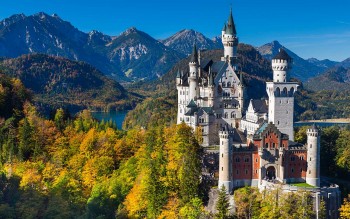 | Top 10 Most Beautiful Castles in Germany Europe is the land of palaces and castle, with outstanding, wonderful architectures. Take a look at these 10 most beautiful castles in Germany. |
 | For 104 Years, Hue's Anh Dinh Palace Continues to Impress Recognized by UNESCO as a World Cultural Heritage, An Dinh Palace was built as a real castle, with a different beauty compared to hundreds of ... |
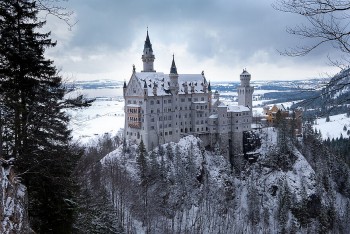 | The Most Beautiful Castles Around The World Through Dutch Photographer’s Lenses Vincent Croce, a Dutch photographer, has travelled around the world and Europe to capture the mesmerizing beauty of the ancient castles. |
Recommended
 World
World
Thailand Positions Itself As a Global Wellness Destination
 World
World
Indonesia Accelerates Procedures to Join OECD
 World
World
South Korea elects Lee Jae-myung president
 World
World
22nd Shangri-La Dialogue: Japan, Philippines boost defence cooperation
 World
World
Pakistan NCRC report explores emerging child rights issues
 World
World
"India has right to defend herself against terror," says German Foreign Minister, endorses Op Sindoor
 World
World
‘We stand with India’: Japan, UAE back New Delhi over its global outreach against terror
 World
World


